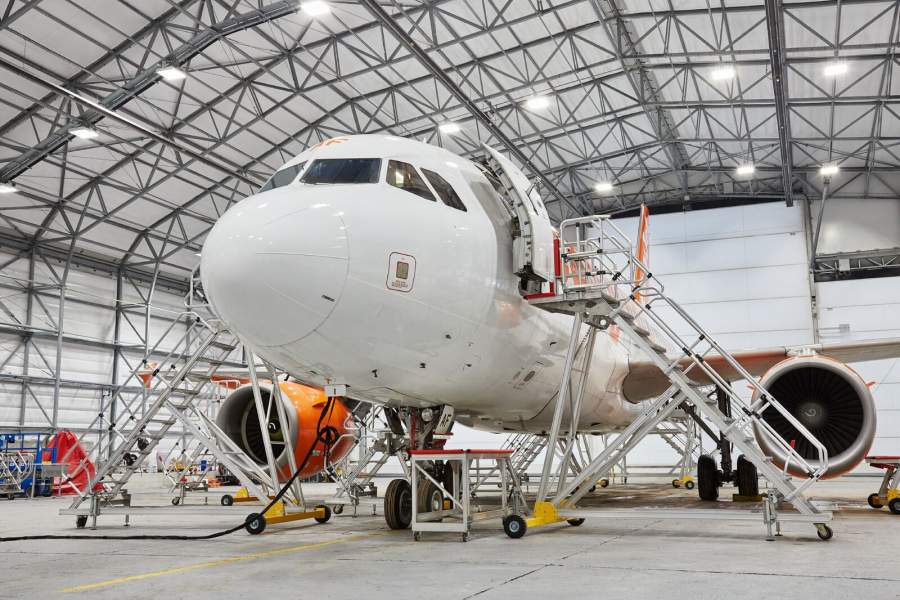Options When Looking For An MRO Company

Maintenance, repair, and overhaul facilities manage servicing of aircraft airframe, engine, and other components. There are various options available according to type, location, purpose, and ownership. Each aircraft component has particular maintenance, repair, and overhaul requirements. So, it is very important to understand the most appropriate MRO facility to handle your aircraft service requirements.
Types of maintenance at an MRO facility
It is very important to understand what to expect at an MRO facility. Keeping an aircraft airworthy requires ensuring various things are in order. This is the work done at the MRO facility. Components such as nonresponsive controls and defective instruments need repair. The professionals at the MRO facility fix all these including repair major structural issues such as broken windows and dents.
For an aircraft that needs an overhaul, the technical team will take it apart piece by piece to inspect the components before putting the plane together gain. Doing this verifies the airworthiness of a plane since mechanics can tell whatever is below the surface. Overhauling the plane also allows mechanics to check for hidden damage, and unusual wear and tear to allow replacing any components where necessary.
Types of MRO facilities
Independent repair stations
An aircraft MRO company is either managed by a large corporation or a team of technical staff. And, the facility can specialize in handling various aspects of airplane repair and service such as repairing landing gears or interiors. Independent MRO facilities handle specialized services that might not be available at other facilities that lack the expertise and equipment.
You can find independent MRO stations at major airports handling various aircrafts including corporate jets and helicopters. Smaller facilities work at secondary airports with certified mechanics to handle aircrafts that come to the facility.
Fixed-Base Operators (FBOs)
You can find FBOs at large noncommercial airports supporting the local aviation industry. These facilities have full-service packages to handle aircrafts onsite including line support such as parking and fueling for transient and resident aircrafts. Those that need additional support are handled offsite are the primary gateway for planes and pilots at the airport.
And, they usually have a good working relationship with reputable mechanical workshops. Other services to expect from an FBO facility include:
- Engine and airframe service
- Avionics
- Structural repairs
Commercial airline hubs
Operating a commercial airline requires making sure that the fleet gets limited downtime. A sitting plane doesn’t make any money. Major airlines can’t be subject to charges and schedules from other companies. So, they have facilities for maintaining their fleet. It is no wonder that most major airlines have an MRO facility. This can be a separate company with different management or a division of the company.
Apart from eliminating downtimes, it makes financial sense to manage the maintenance of their large fleet. MROs for commercial airlines don’t have a particular business model since they solely support the company fleet. The facility is usually in the airline’s major hub to offer various repair and maintenance services. Keep in mind that these MROs don’t subcontract competing airlines apart from some exemptions.
Regional airline maintenance facility
Another type of MRO facility is that owned by regional airlines operating out of small regional airports. These facilities are scattered across the whole operating area of the airline without a central hub.
Regional airlines are subjected to similar inspection and repair. However, these operate on a smaller budget with a smaller fleet compared to large commercial airlines. Keeping costs low allows making a slightly higher profit. This is possible by allowing in-house technicians and subcontractors to handle repairs.
Military maintenance facilities
As you can tell from the name, these are maintenance facilities for military aircrafts. The facilities are managed by military service members while offering similar maintenance as those at civilian facilities. Military MROs serve various aircrafts and have a range of airspace ground equipment and towing equipment. These facilities are usually massively backed by various MRO assets for proper a d efficient repair and inspection of various military aircrafts.
Technology taking aviation MRO to new heights
The Internet of Things is the buzzword in the technology realm including in the aviation industry. It optimizes efficiency, enhances proficiency, and profitability. Augmenting IoT in aviation includes sensors to enhance and streamline maintenance according to conditions.
Collecting big data offers insight that enhances operations and lessens maintenance delays. Predictive maintenance solutions are now possible to allow identifying necessary repairs before they become visible. Wearable tech offers innovative aircraft maintenance solutions for timely repairs and connectivity.
Aircraft maintenance, repair, and overhaul are essential processes to avoid aircraft accidents. Timely service at an MRO facility ensures that the plane is airworthy and saves costly repairs when situations get out of hand. There are maintenance facilities for any kind of aircraft. independent MRO facilities offer full-stack specialized service for a variety of aircrafts.